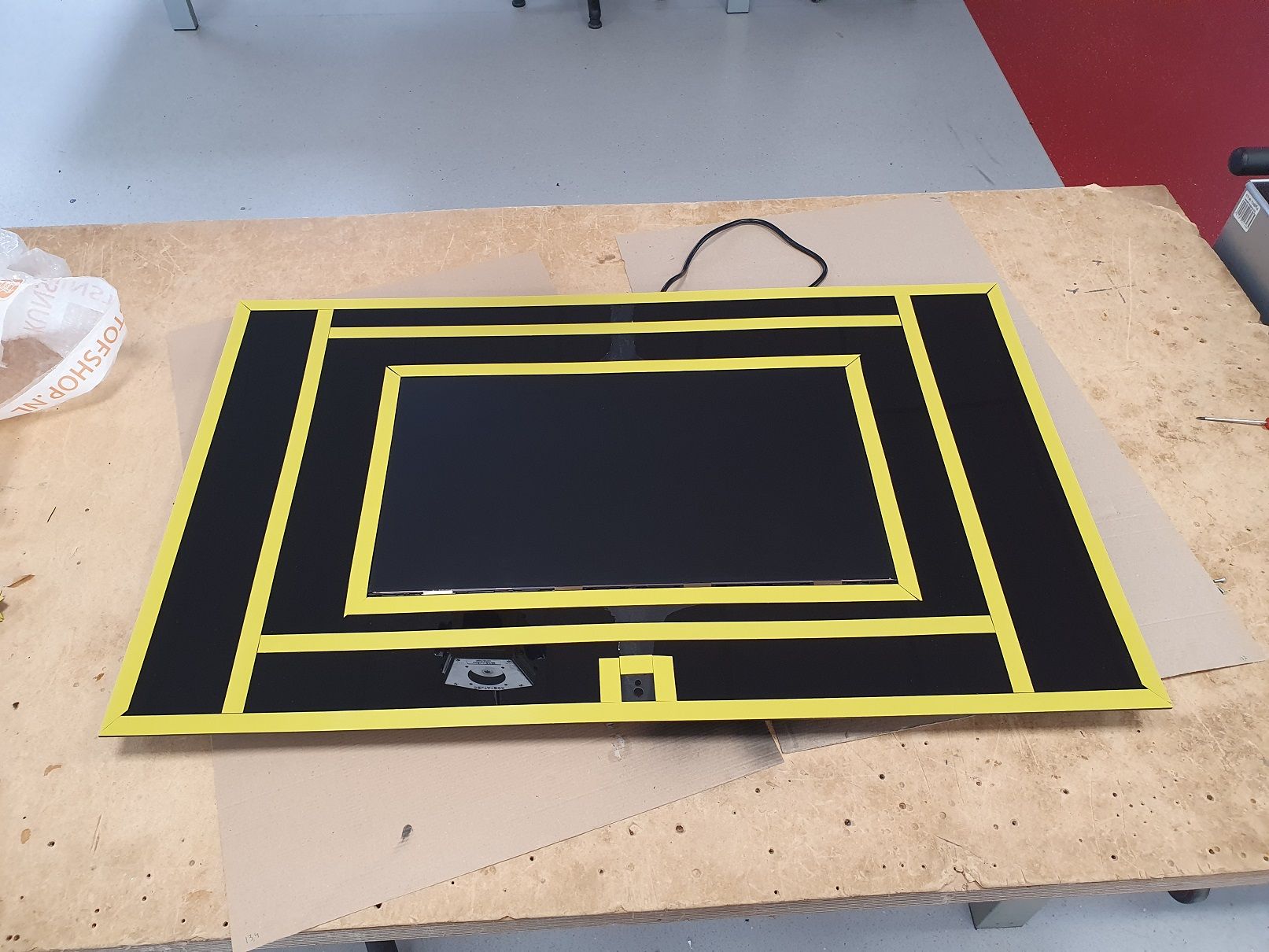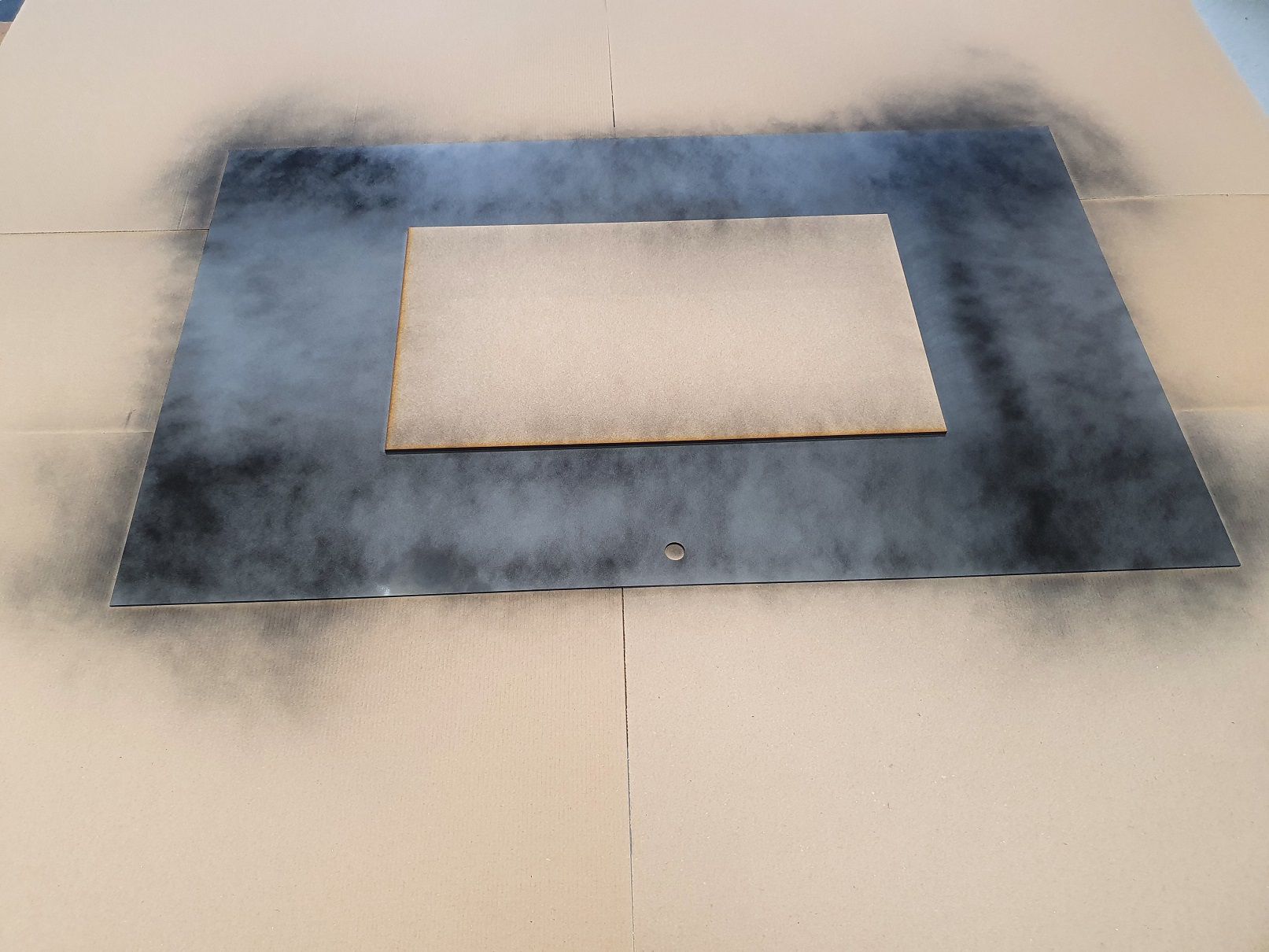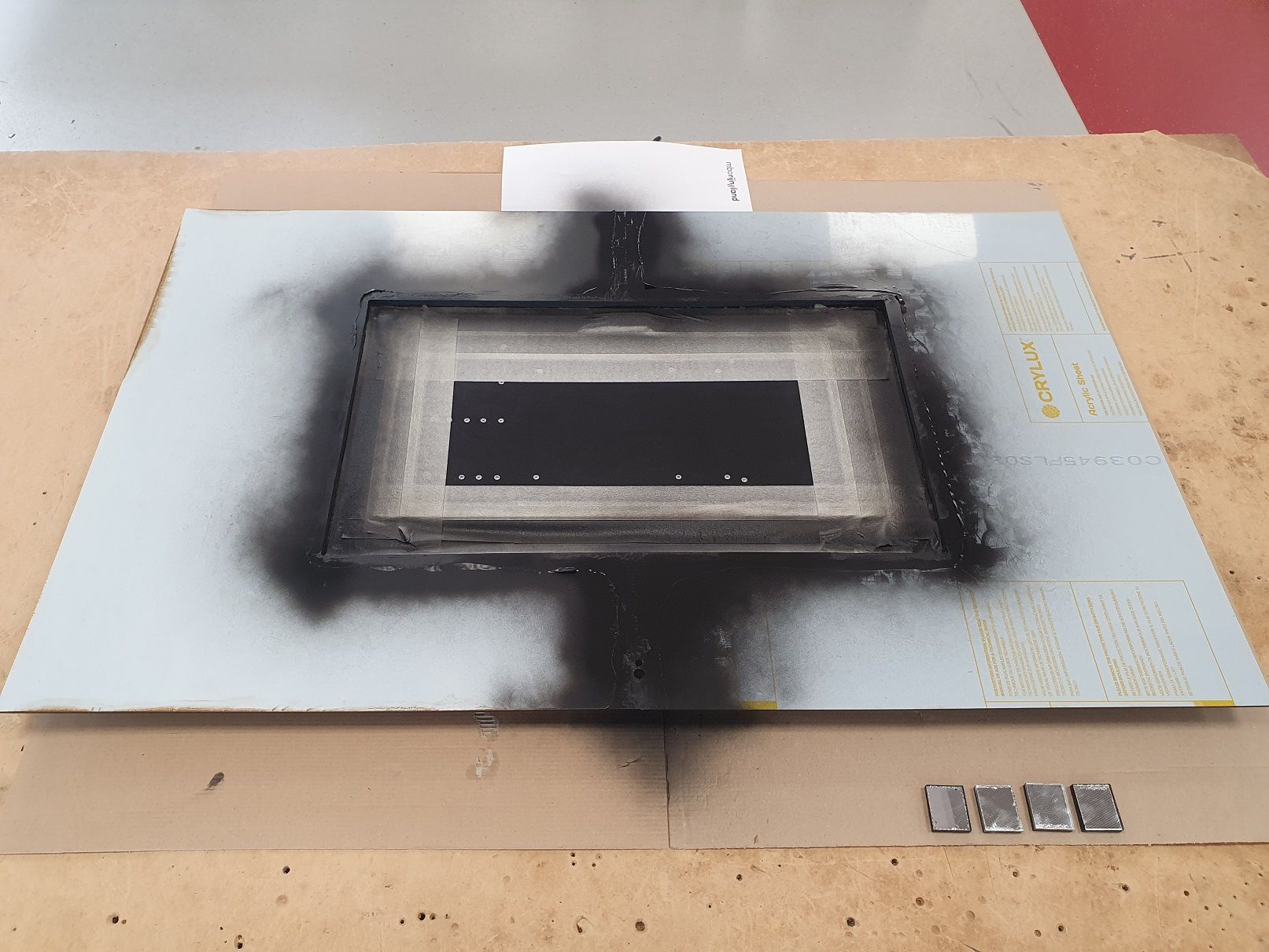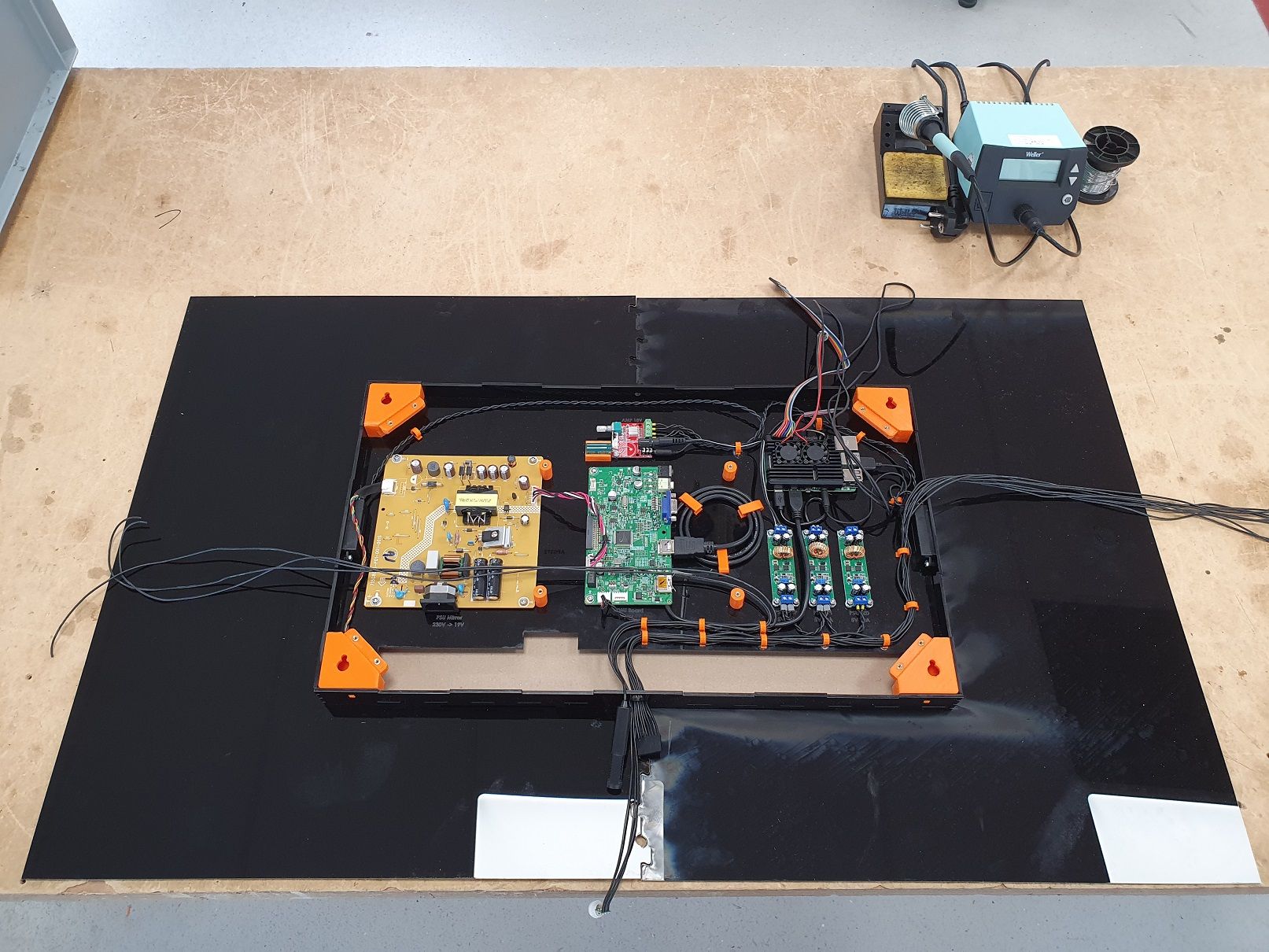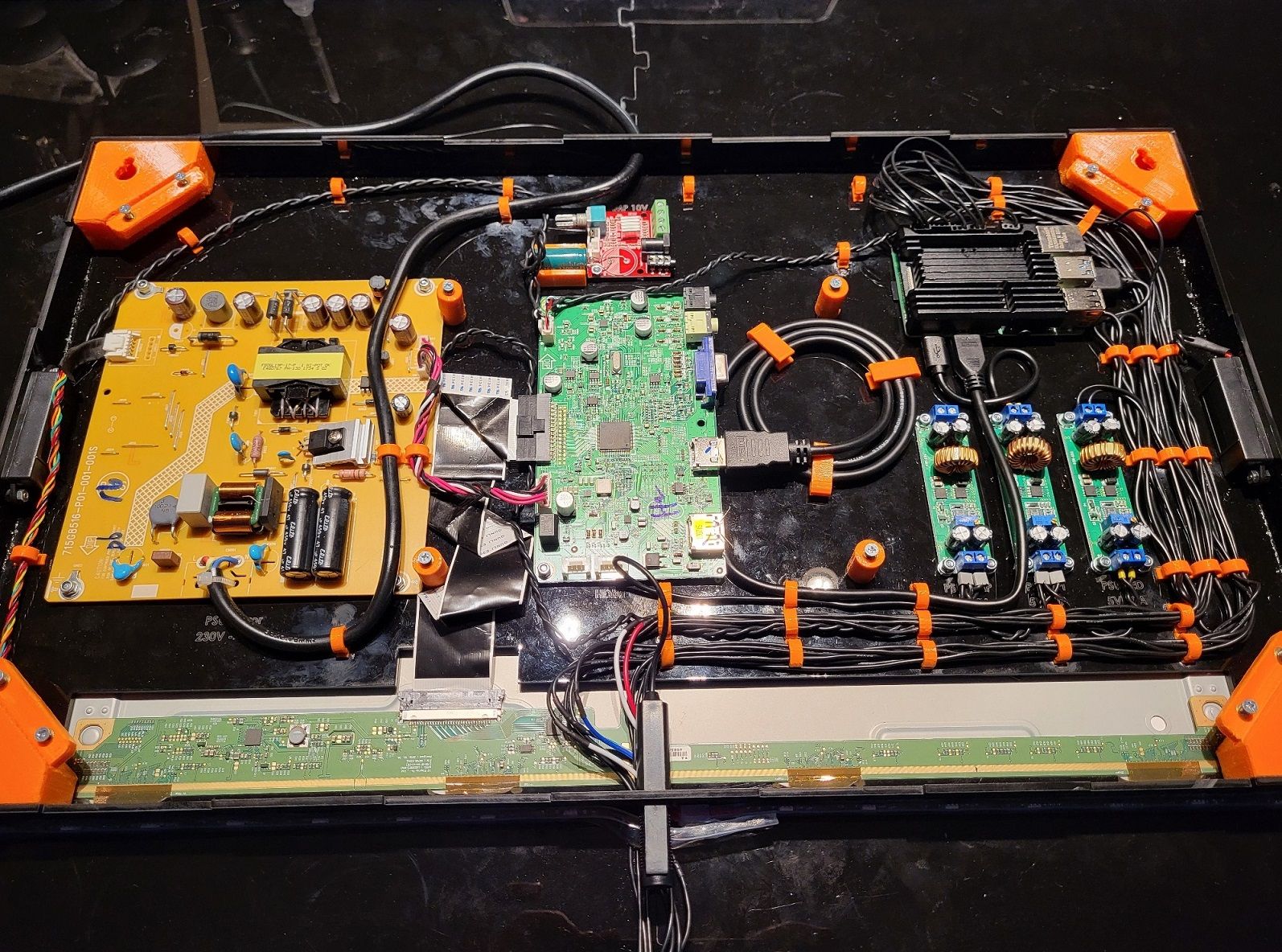Read the statement by Michael Teeuw here.
Bathroom mirror: "Frameless, thin, gesture and voice controlled"
-
@Robert_K great work! Cool Design.
2 questions left.
What are the 3 (same) “devices” below the RPI?You forget to mention the light-stripe. Its a regular RGB? how do you control it? Extra device?
Hint from myself: I used the rest of APA102-5V-Stripes and installed Hyperion in parallel. No extra device needed and animations too. The animations work via Hyperion-App, homebridge and/ or automatisation via ioBroker.Very modern (Guest?-) Bathroom too!
-
Thank you for the compliment.
The 3 “devices” are DC-DC converters. They are adjustable. The screen powerbord suplies 19V DC.
The Pi uses 5V, the LED’s uses 5V (but works better on 4V) and the audio bord uses 9V, however I didn’t use them. Both have a great power output (enought amps)The LED’s are WS2801 programable (waterproof) LED’s for which I wrote two python scipts.
The Gesture module activates these python scripts.Regards Robert
-
Hi Robert, that is a really cool mirror. What glass did you use? It looks very sharp and useful as a bathroom mirror ;-).
-
If I recall correctly, I used this type of mirror:
https://plexiglasstunter.nl/plexiglas-xt-plaat-spiegel -
@Robert_K Just noticed this project and looks similar to something I want to build (frameless).
I see you have used plexiglas, you could also have used real glas (although a bit more expensive like here). Was there a reason other then price to go for plexi? I’m a bit afraid of warping.
Now some time further: How does the frame hold to the mirror? No issues with the glue? Did you ever consider using sticky black vinyl instead of the paint? (like this? and then attach the frame to it (I was thinking of using that type of solution).
Anything else on the build you would have done different in retrospect?
Thanks
-
Goodmorning,
Hardware wise I have not a single issue. There is absolutly no warping in the plexiglass.
I choose plexiglass because that’s what I can get hold of easiliy. And with a industrial lasercutter at hand it’s easy to build products with plexi.Things I would have don differently would only be software. The Google / Hotword is realy sensitive, and Google is gimmick but not really usefull. So I wouldn’t install it in a next version. It’s only to showoff but we’re not using it on a regular day. Besides that, it slows the mirror and internet connection down a lot. (but this could be a fault in my software)
Regards Robert

